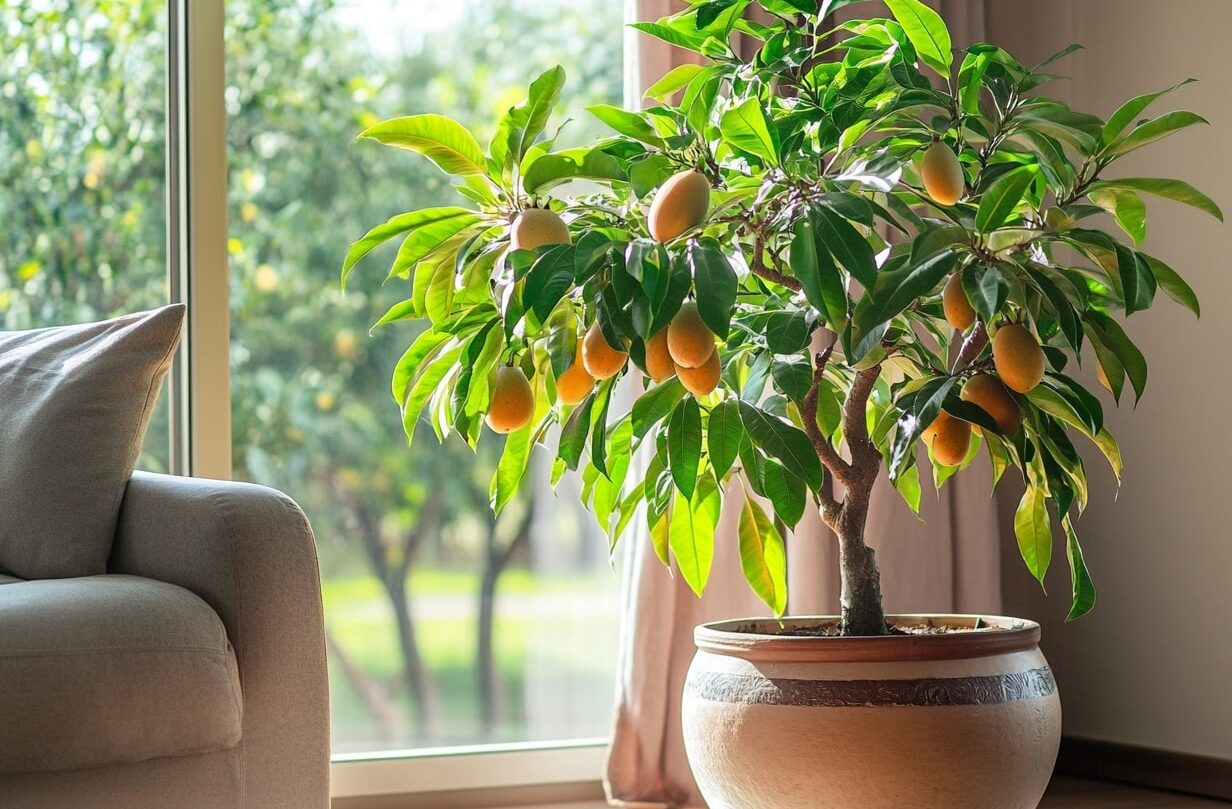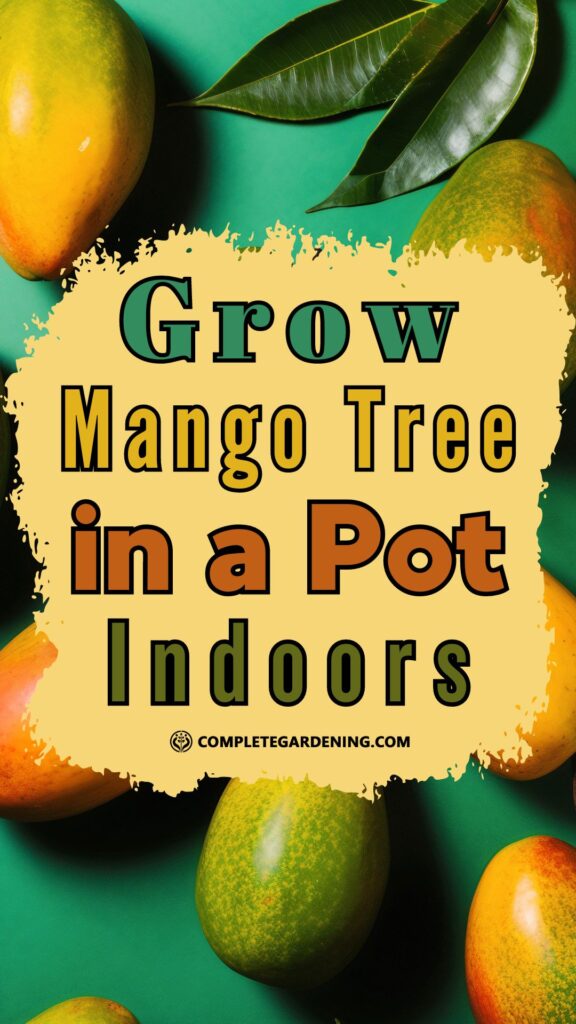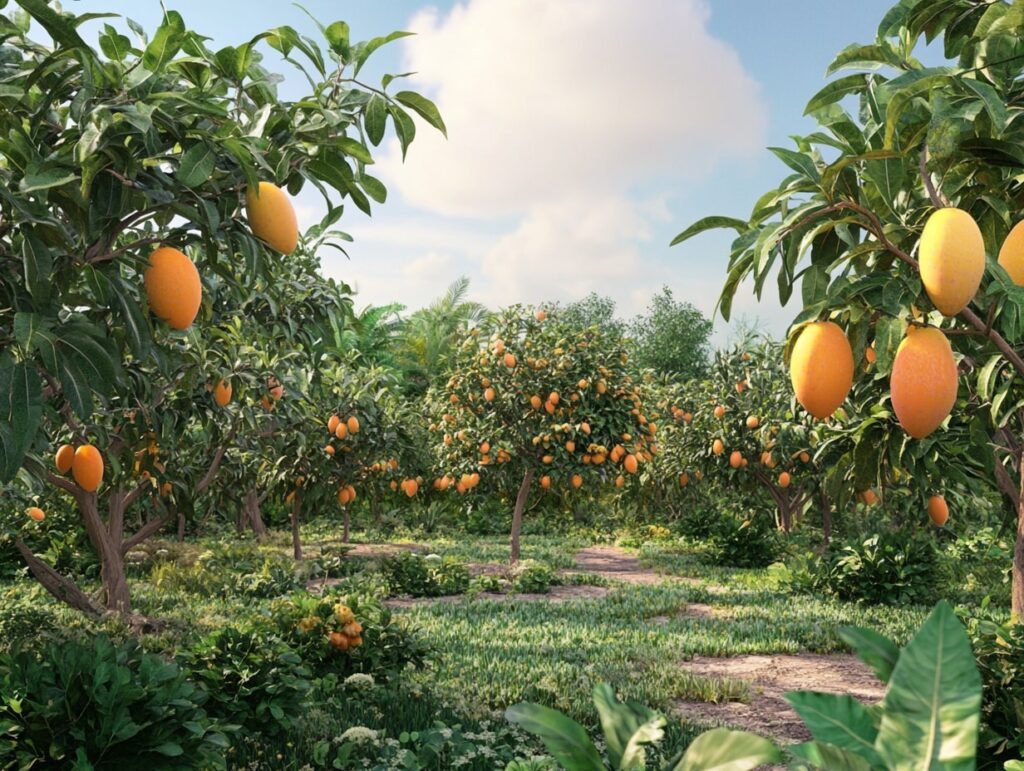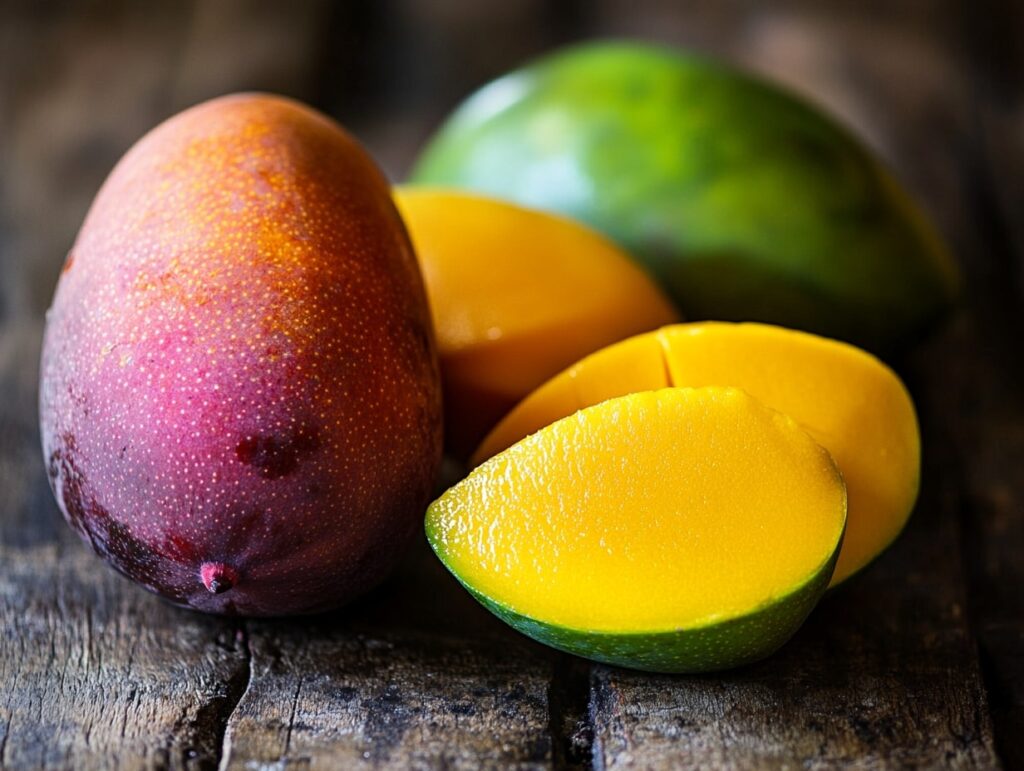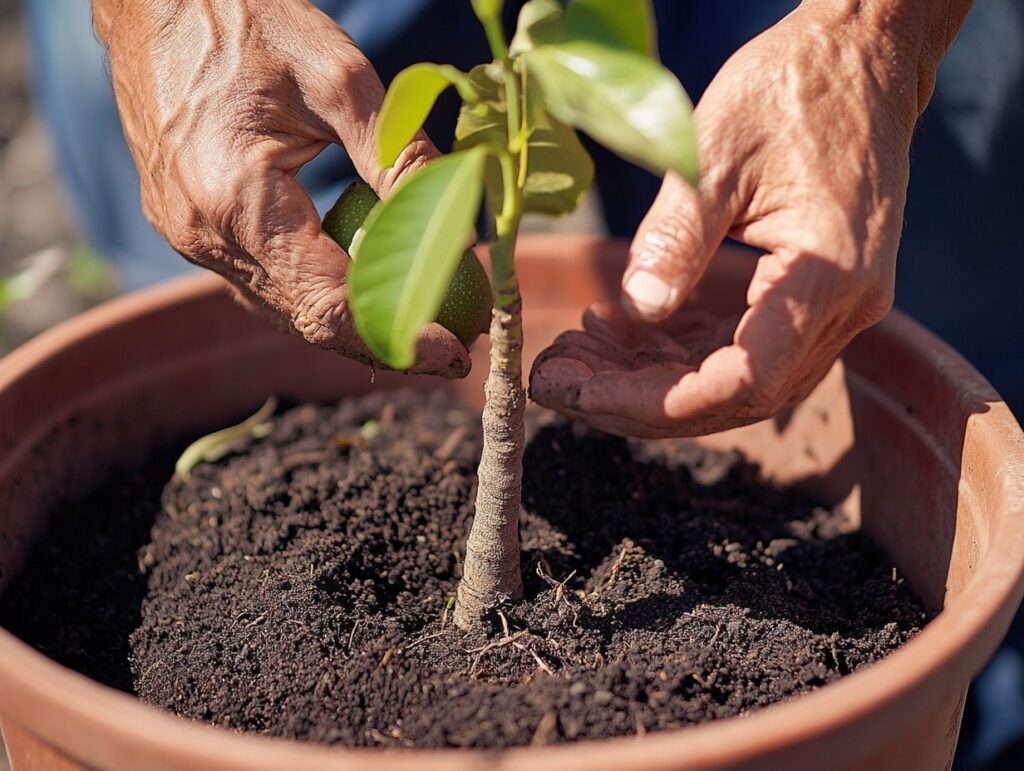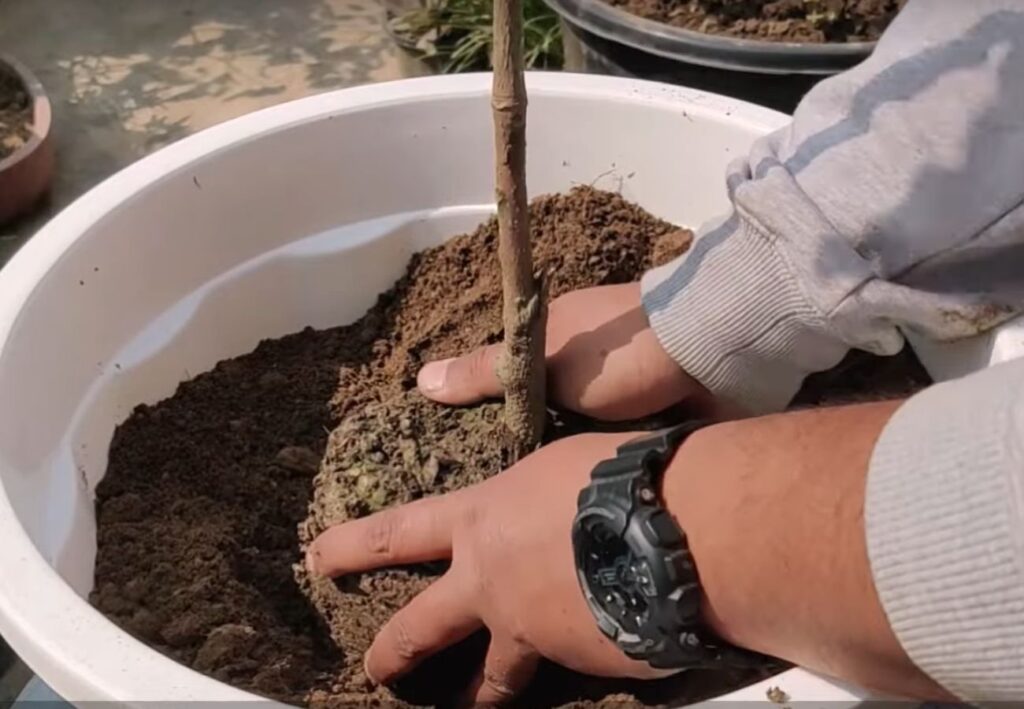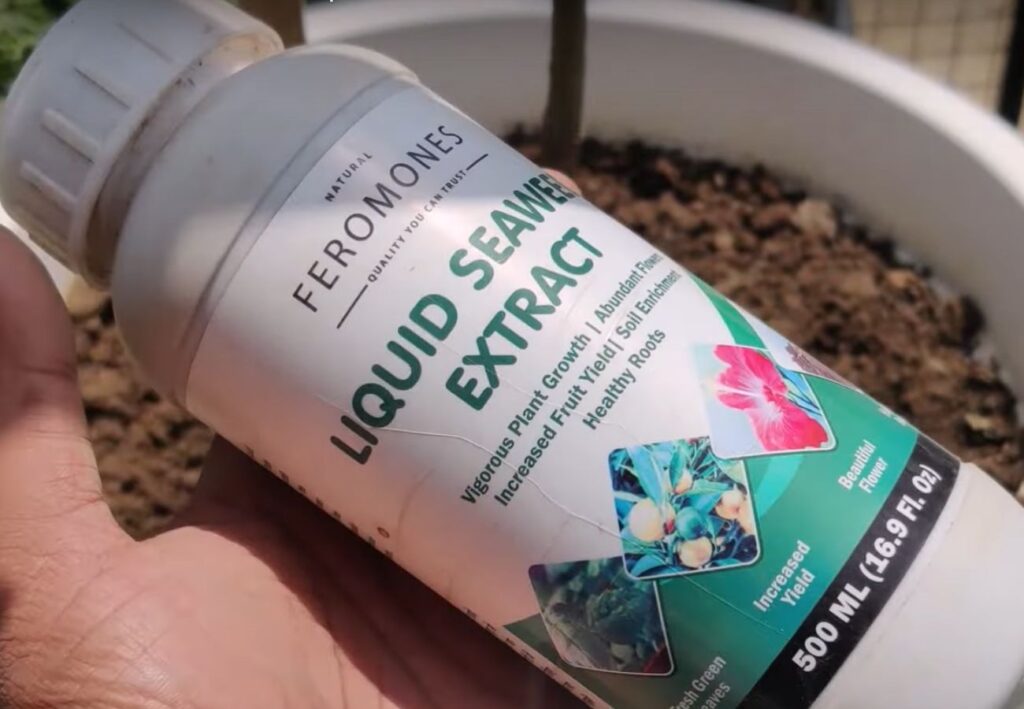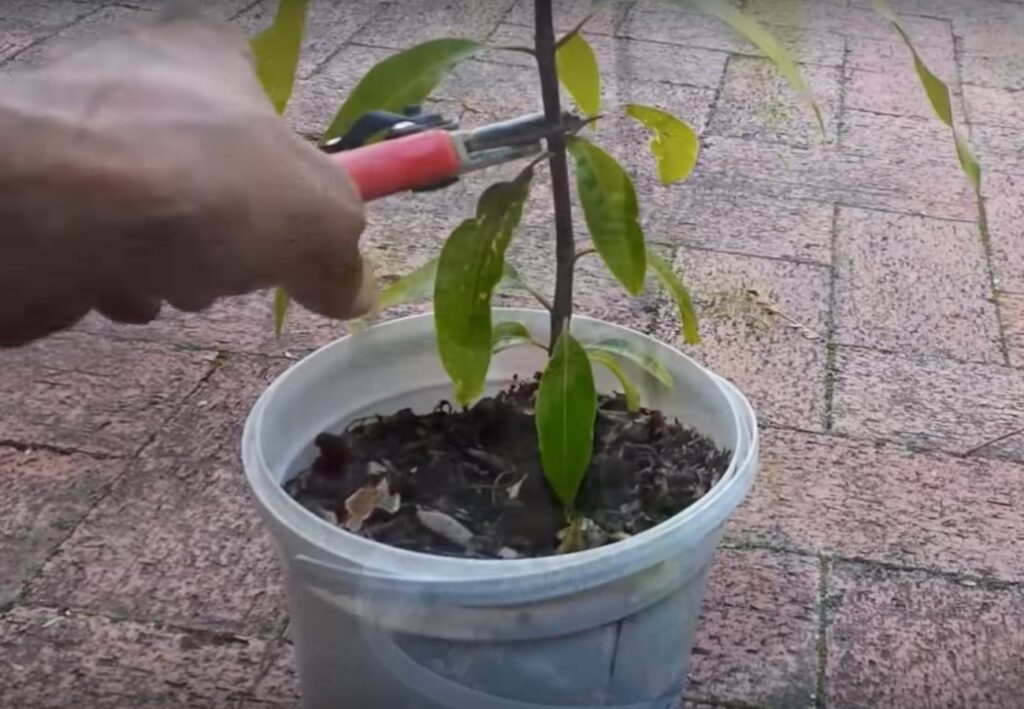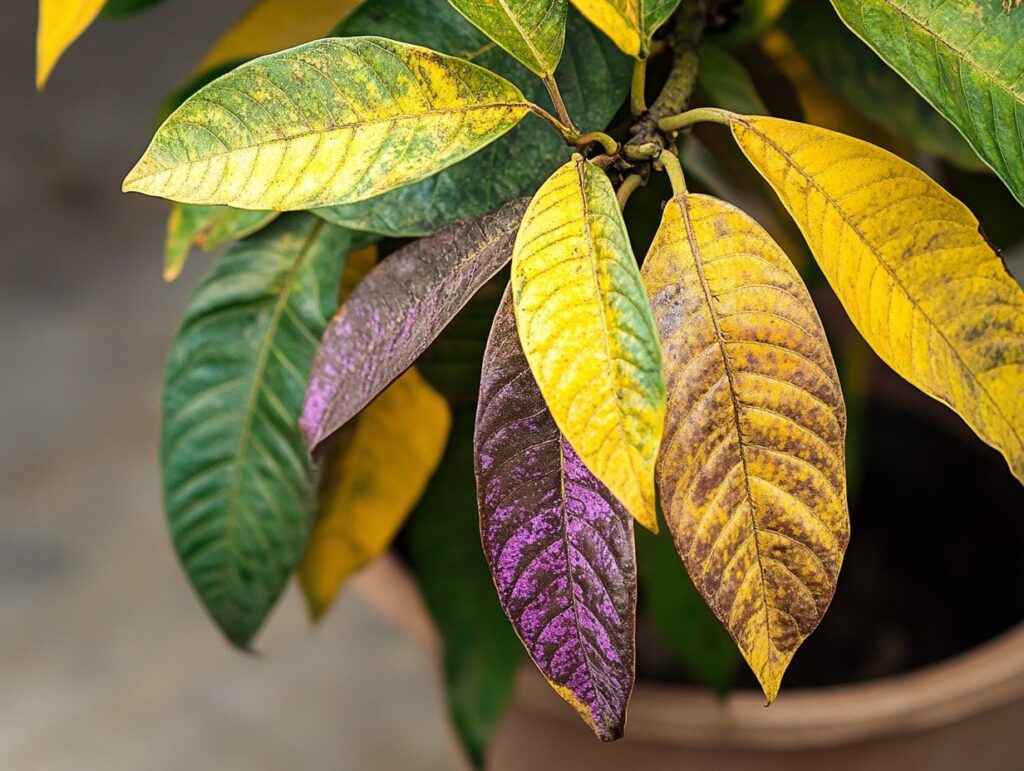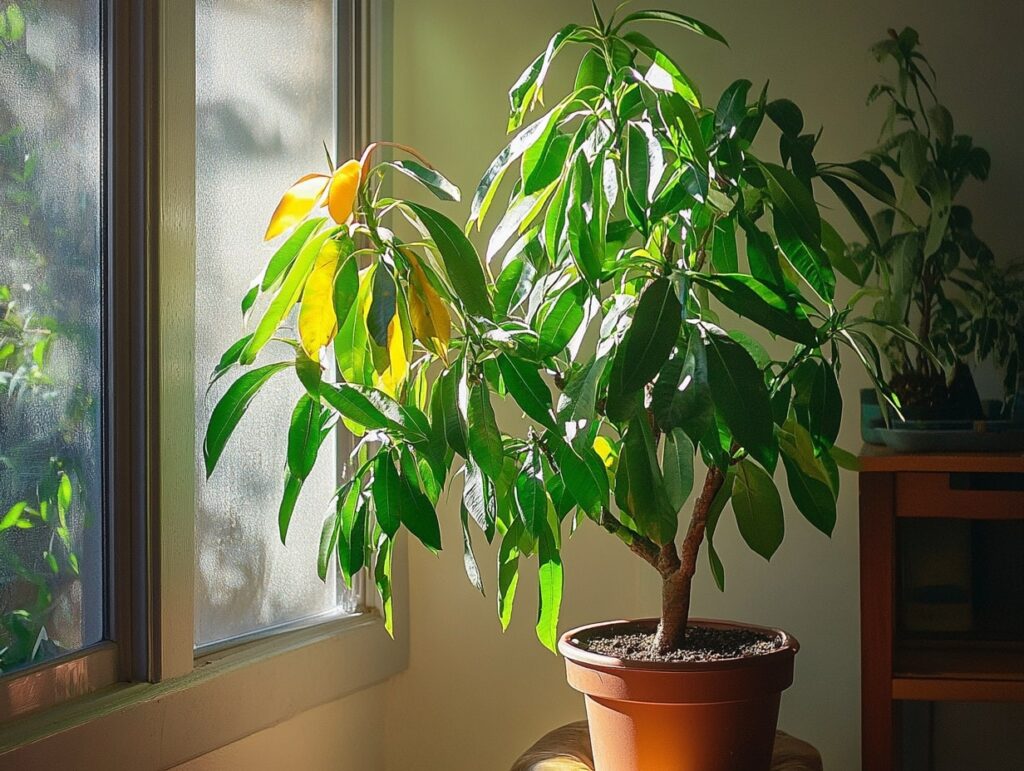Growing a mango tree in a pot can be an exciting and rewarding experience. It’s a great way for anyone, even those with limited space, to enjoy fresh, home-grown mangoes.
To successfully grow a mango tree in a pot, you’ll need to choose the right variety, use a suitable soil mix, and ensure good drainage.
You don’t need a large backyard to grow a mango tree. A sunny balcony or porch can be perfect for a potted mango. The key is to use a pot that’s at least 20 inches in diameter and to provide consistent care, including regular watering and fertilization.
In this guide, we will walk you through the necessary steps to help your potted mango tree thrive. From selecting the right pot to caring for your tree as it grows, you’ll find helpful tips to enjoy the sweet fruits of your labor.
Choosing the Right Mango Variety
Selecting the right mango variety ensures that your tree thrives and produces delicious fruit. Pay attention to size and growth habits, climate compatibility, and fruit flavor profiles when making your decision.
Size and Growth Habits
Certain mango varieties are better suited for container growth. Dwarf mango trees, such as ‘Julie’ and ‘Cogshall’, are ideal because they naturally grow smaller and are easier to manage in confined spaces.
Look for varieties that are advertised as compact or suitable for potting. Regular pruning will help maintain a manageable size and shape for your potted mango tree.
Climate Compatibility
Choose a mango variety that matches your local climate conditions. Mango trees generally prefer warm tropical or subtropical climates. However, some varieties are more tolerant of cooler temperatures.
‘Nam Doc Mai’ and ‘Keitt’ are known for their versatility and can adapt to a wider range of climates. If you live in a cooler region, consider bringing your mango tree indoors during colder months to protect it from frost.
Fruit Flavor Profiles
The flavor profile of the fruit is a significant consideration. Mango varieties differ in sweetness, texture, and aroma, so choose one that suits your taste preferences.
‘Alphonso’ mangoes are renowned for their rich, creamy texture and sweet flavor with a hint of citrus. ‘Kent’ offers a more fibrous texture with a balanced sweet and tart flavor. Sampling different varieties can help you decide which one to grow in your pot.
Selecting the Perfect Pot
Choosing the right pot is critical for the health and growth of your mango tree. Focus on the material of the pot and ensure it meets the necessary size and drainage requirements.
Material Considerations
The material of the pot affects its weight, durability, and mobility. Terracotta pots are breathable, allowing excess moisture to escape, but they are heavy and can crack in freezing temperatures.
Plastic pots are lightweight, making them easy to move, but they may retain moisture, leading to root rot, so ensure they have plenty of drainage holes.
Fiberglass pots are durable and lightweight but can be expensive. Wooden barrels offer a rustic look and good insulation for roots, but they decay over time. Each type of pot has its pros and cons, so choose according to your climate and preferences.
Size and Drainage Needs
The size of the pot is crucial for the mango tree’s root system. Start with a pot that is at least 20 inches in diameter and 24 inches deep. This ensures the roots have enough space to grow. As the tree matures, you may need to transfer it to a larger pot.
Good drainage is essential to prevent root rot. Ensure the pot has multiple drainage holes at the bottom. You can also place a layer of small stones or broken pottery pieces at the bottom to improve drainage.
Avoid letting water sit in a saucer or tray under the pot, as this can waterlog the roots.
By selecting the right material and size, and ensuring proper drainage, you set the foundation for a healthy, thriving mango tree in a pot.
The Basics of Planting
Starting a mango tree in a pot involves selecting the right soil composition and utilizing an effective planting technique. Both steps are essential to ensure healthy growth and fruit production.
Soil Composition
Use a well-draining potting mix with a blend of loam, sand, and organic matter. Mango trees are sensitive to soil that retains too much moisture, which can lead to root rot.
To improve drainage, add perlite or small gravel. Soil pH should range from 5.5 to 7.5.
Incorporate compost or aged manure to supply necessary nutrients. This will promote vigorous growth and abundant fruiting. Regularly check drainage to prevent waterlogging.
Planting Technique
Choose a pot at least 20 inches deep and wide, with drainage holes. Fill the pot with prepared soil mix, leaving room for the root ball.
Position the sapling in the center. Fill around the roots, firming the soil gently. Water thoroughly after planting to settle the soil.
Place the pot in a location with full sunlight for at least 6 hours daily. Monitor soil moisture, watering when the top inch is dry.
Caring for Your Mango Tree
Mango trees in pots require careful attention to watering, fertilization, and pruning. Ensuring that each need is properly met will help your tree flourish and produce delicious fruit.
Watering Schedule
Your mango tree needs a consistent watering schedule. Water deeply once or twice a week, ensuring the water reaches the root zone. Avoid over-watering; the soil should be moist but not soggy.
During the dry season, increase watering to keep the soil from drying out. Tip: Use a moisture meter to check the soil’s moisture level. Let the top inch of soil dry out between watering to prevent root rot.
Adjust your watering frequency depending on the tree’s size and the climate. Younger trees need more frequent watering than mature ones. If the leaves start to yellow or wilt, reassess your watering routine.
Fertilization Tips
Proper fertilization is crucial for growth and fruit production. Use a balanced, slow-release fertilizer with equal parts nitrogen, phosphorus, and potassium. Apply fertilizer every 4-6 weeks during the growing season.
Add micronutrients like magnesium and iron to promote healthy foliage. Tip: Opt for an organic fertilizer if you prefer a natural approach. Always follow label instructions to avoid over-fertilizing.
In the winter months, reduce fertilization since the tree’s growth slows down. Warning: Over-fertilization can lead to root burn and leaf drop.
Pruning Practices
Pruning helps shape your mango tree and encourages more fruit production. Prune during the dormant season to remove dead or diseased branches. Avoid heavy pruning, as it can stress the tree.
Tip: Use clean, sharp pruning shears to make precise cuts. Remove any suckers or water sprouts that compete with the main branches. These can drain energy from the tree and reduce fruit yield.
Regular pruning also helps improve air circulation and light penetration, which benefits overall tree health. Mind the size of your pot; over-pruned trees may outgrow their containers quickly.
Troubleshooting Common Issues
When growing a mango tree in a pot, several challenges may arise. Addressing these common issues early can help your tree thrive.
Pest Management
Mango trees are susceptible to pests like aphids, mealybugs, and spider mites. Regular inspections can help you detect infestations early.
Neem oil, insecticidal soap, or a mix of water and dish soap can effectively control pests. Apply these treatments every 7-10 days. For persistent problems, consider introducing natural predators such as ladybugs.
Cover the soil with a layer of diatomaceous earth to deter insects from laying eggs. Keep the area around your pot clean to minimize pest activity. Always follow the product instructions for safety and effectiveness.
Disease Prevention
Fungal infections like powdery mildew and anthracnose can affect potted mango trees. Ensure good air circulation around the tree to reduce humidity levels, which fungi thrive in.
Water early in the morning so the soil can dry out by evening. Avoid wetting the foliage when watering. For treating fungal infections, use a sulfur or copper-based fungicide following the product directions.
Prune any diseased branches promptly and dispose of them properly to prevent spreading. Maintaining proper spacing and not overcrowding the pot also helps in disease prevention.
Addressing Nutrient Deficiencies
Nutrient deficiencies can manifest as discolored leaves or poor growth. Yellowing leaves often indicate a lack of nitrogen, while purple leaves might suggest a phosphorus deficiency.
Use a balanced, slow-release fertilizer specifically formulated for fruit trees. Apply every three months during the growing season. Conduct a soil test to identify specific deficiencies.
For immediate solutions, consider liquid fertilizers or foliar sprays. Mix according to the instructions and apply directly to the leaves.
Avoid over-fertilizing, which can damage the roots and cause leaf burn. Regularly check the plant for signs of deficiencies and adjust your feeding schedule accordingly.
Growing a mango tree in a pot is not just a feasible project but also a highly rewarding one, especially when space is limited.
By carefully selecting the right variety, choosing an appropriate pot, and providing the necessary care, you can enjoy the sweet, tropical taste of home-grown mangoes even in a small space.
Regular attention to watering, fertilization, and pruning will ensure your mango tree stays healthy and productive. Troubleshooting common issues early on, such as pests, diseases, and nutrient deficiencies, will help you maintain a thriving tree.
Whether you’re a seasoned gardener or a beginner, cultivating a mango tree in a pot brings the joy of nurturing a living plant and the satisfaction of harvesting your own fruit.
With patience and the right techniques, you can transform your small garden, balcony, or porch into a mini tropical oasis, filled with the fragrance and flavor of ripe mangoes.
So, why not give it a try and start your journey toward growing your very own potted mango tree today? The rewards, both in taste and experience, are well worth the effort.
